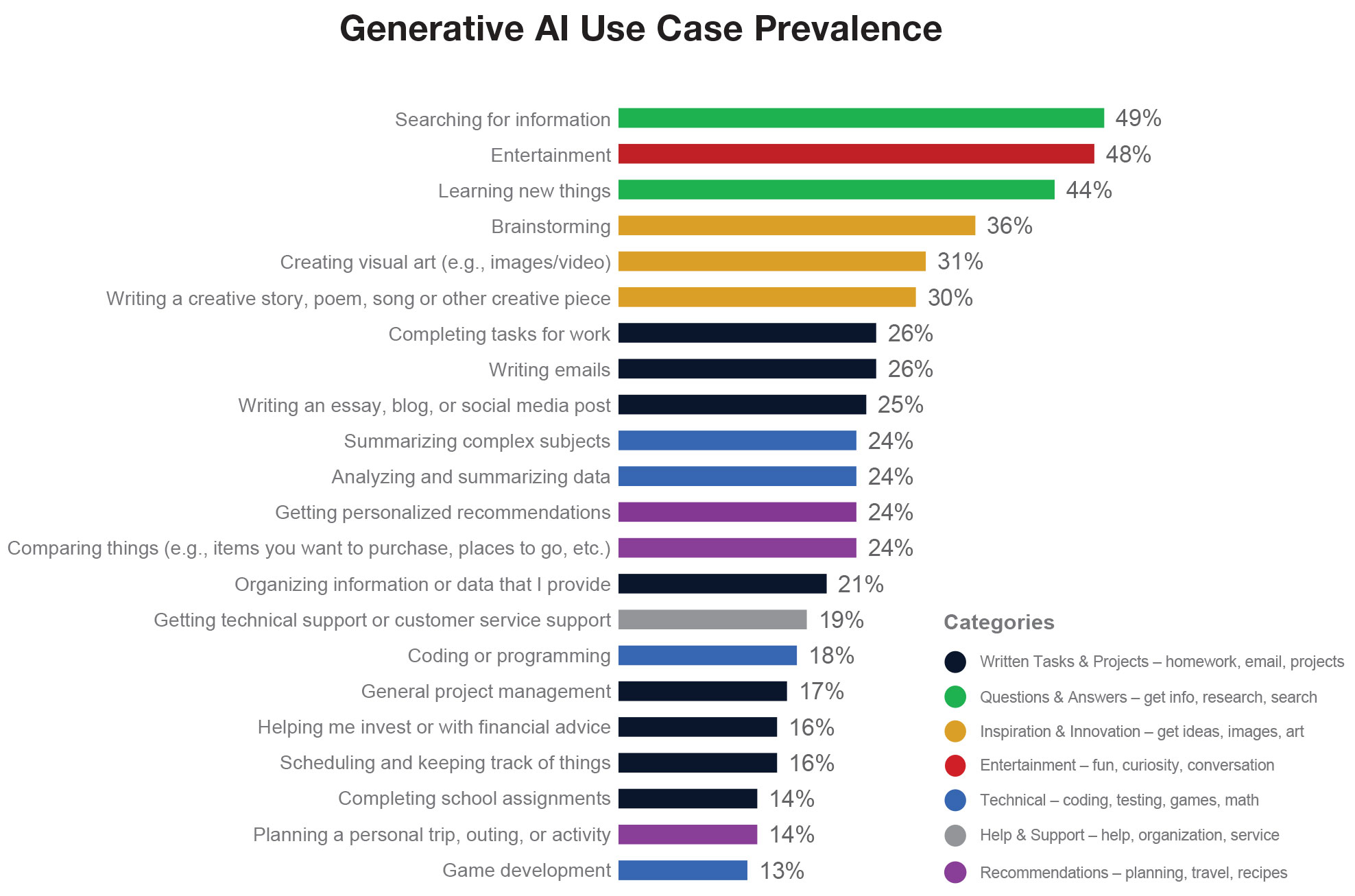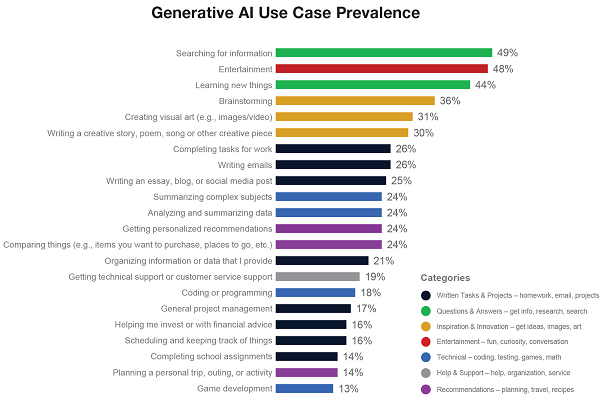How Consumers Are Using Generative AI [Chart]

Nearly half of U.S. generative AI users employ the technology to find information, with entertainment coming a hairsbreadth behind, according to a survey by market research firm Ipsos, as seen in the chart above. Just 16% of those polled said they use generative AI regularly, but of the 1,000 people who engage with generative AI text or image generators like ChatGPT, Bing Chatbot, Bard, DALL-E, Midjourney, or Stable Diffusion, most employed them for education or to amuse themselves.
As these tools become integrated into daily life, understanding user perspectives is critical for companies building products in this space. The chart highlights the extraordinarily rapid adoption of generative AI since its emergence late last year. Ipsos further organized the list around broader categories. For instance, the 49% who reported tapping generative AI to look for information probably overlap heavily with the 44% who said they use it to learn new things. Entertainment stands alone as a major use case, with 48% experimenting recreationally with the technology. Still, it wouldn’t be a surprise to see the 36% who use generative AI to brainstorm dovetailing with the 31% who make visual art or the 30% who leverage it for creative writing.
“As more Americans adopt these tools and AI products are integrated more deeply into consumers’ everyday lives and activities, it is important for brands to understand what users want and expect from the technology,” The report’s authors wrote. “Companies building generative AI tools should keep a pulse on this growing user base and take heed of their needs and priorities to inform their product and marketing strategies.”
Notably, as businesses are proving incredibly eager to deploy generative AI, productivity use cases are growing. Generative AI helps 26% of those surveyed complete work tasks, the same percentage as are using it to write emails, and only 2% and 4% above the groups relying on generative AI-produced summaries of complex topics or data analysis, respectively. This suggests a real desire for real assistance from AI for professional activities. The wide range of early uses illustrates the complex landscape as users explore diverse applications from the emerging toolsets.
Follow @voicebotai Follow @erichschwartz









